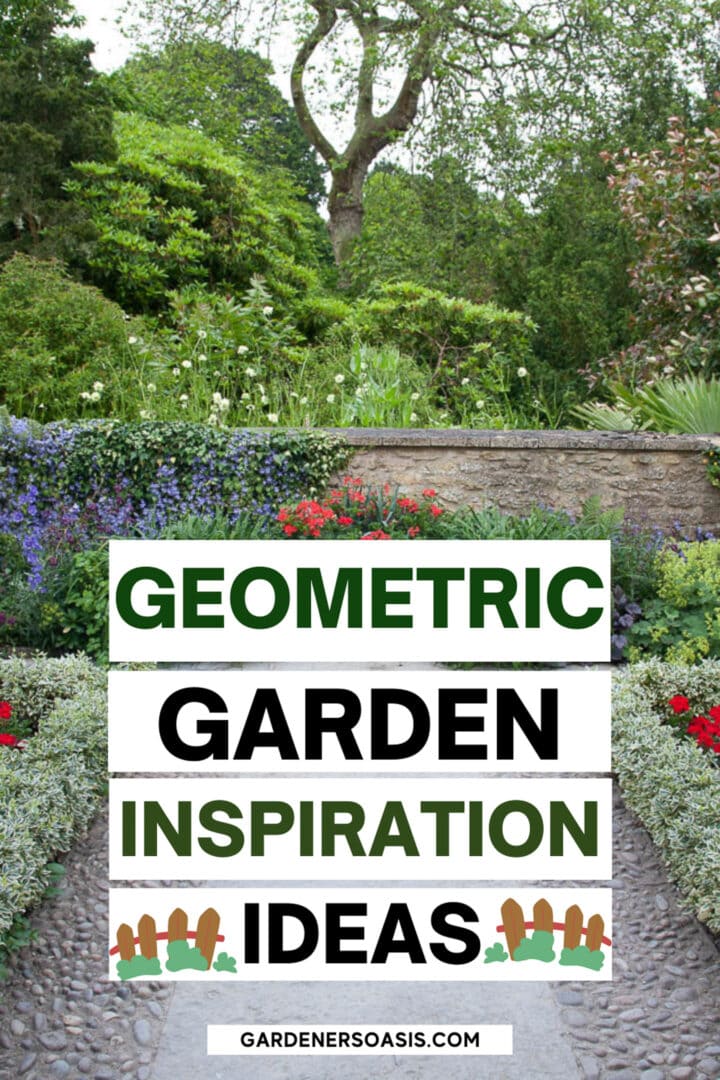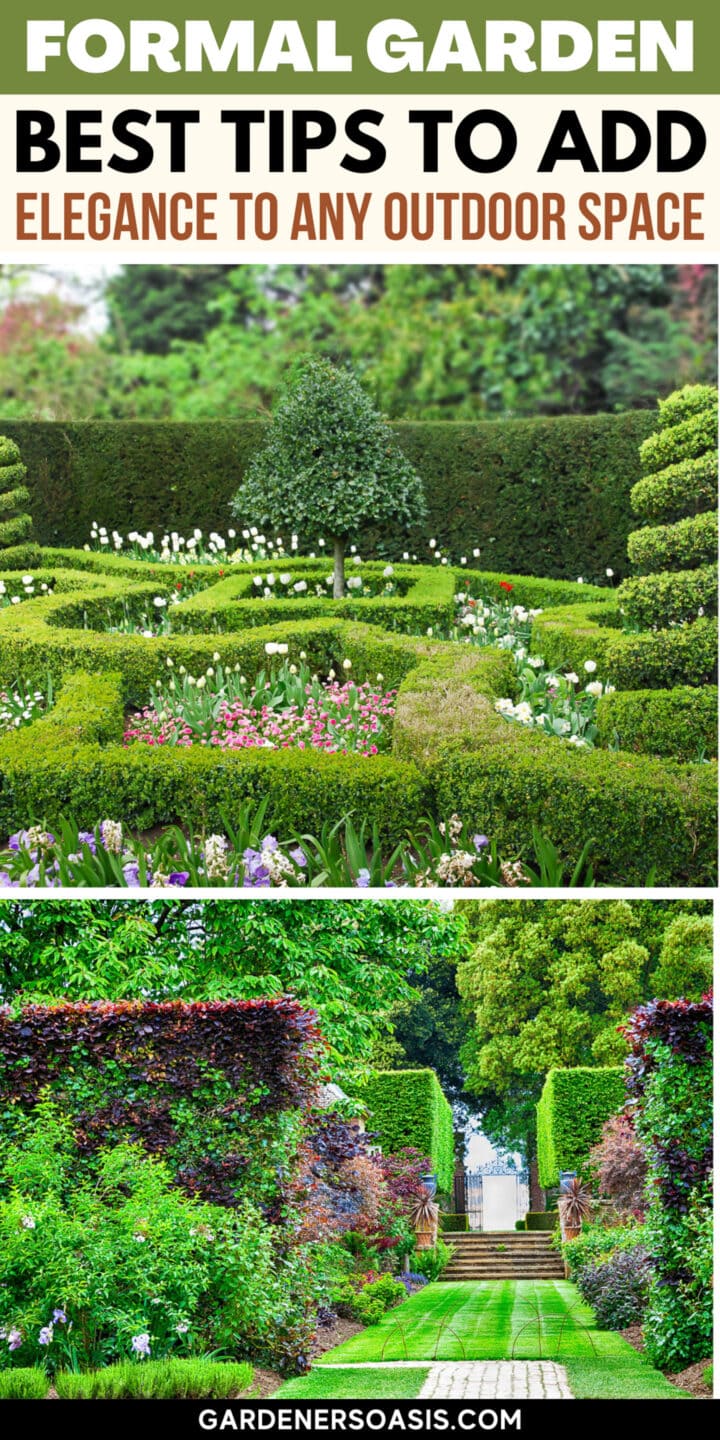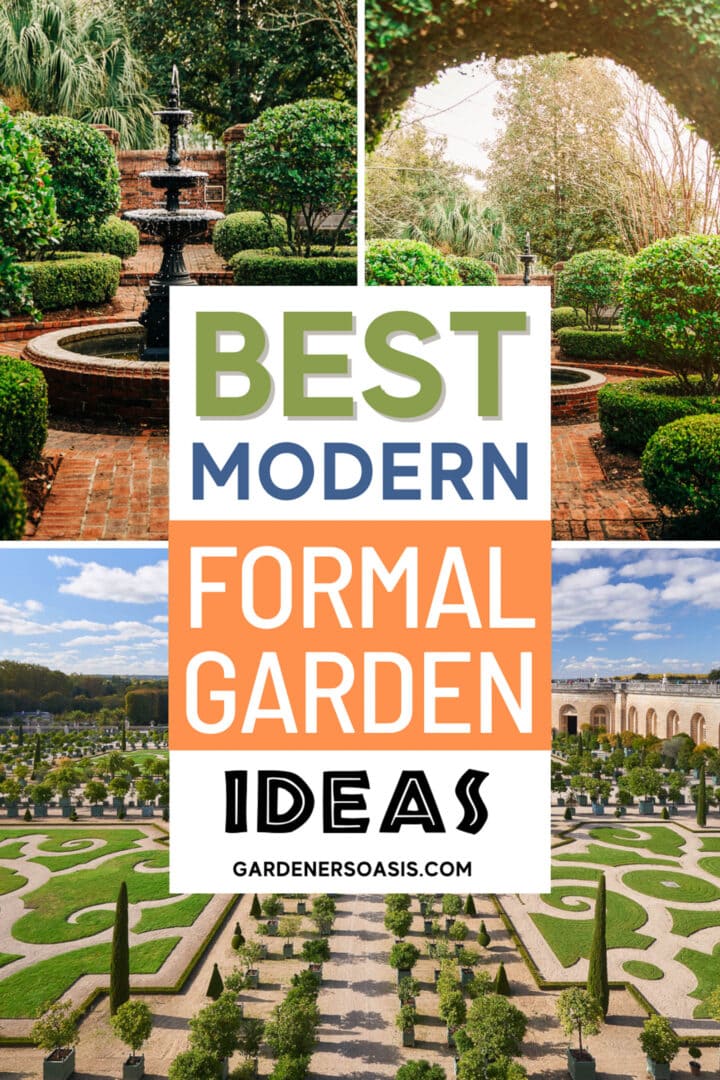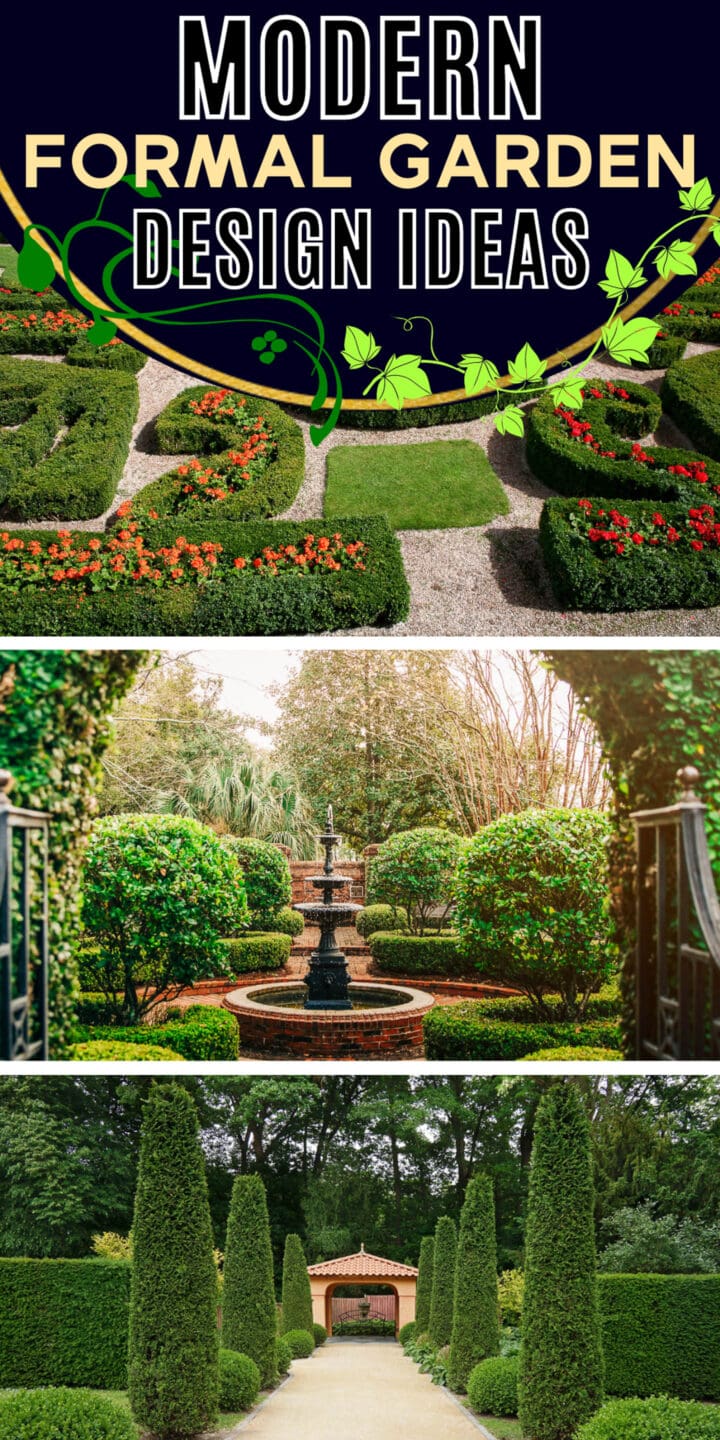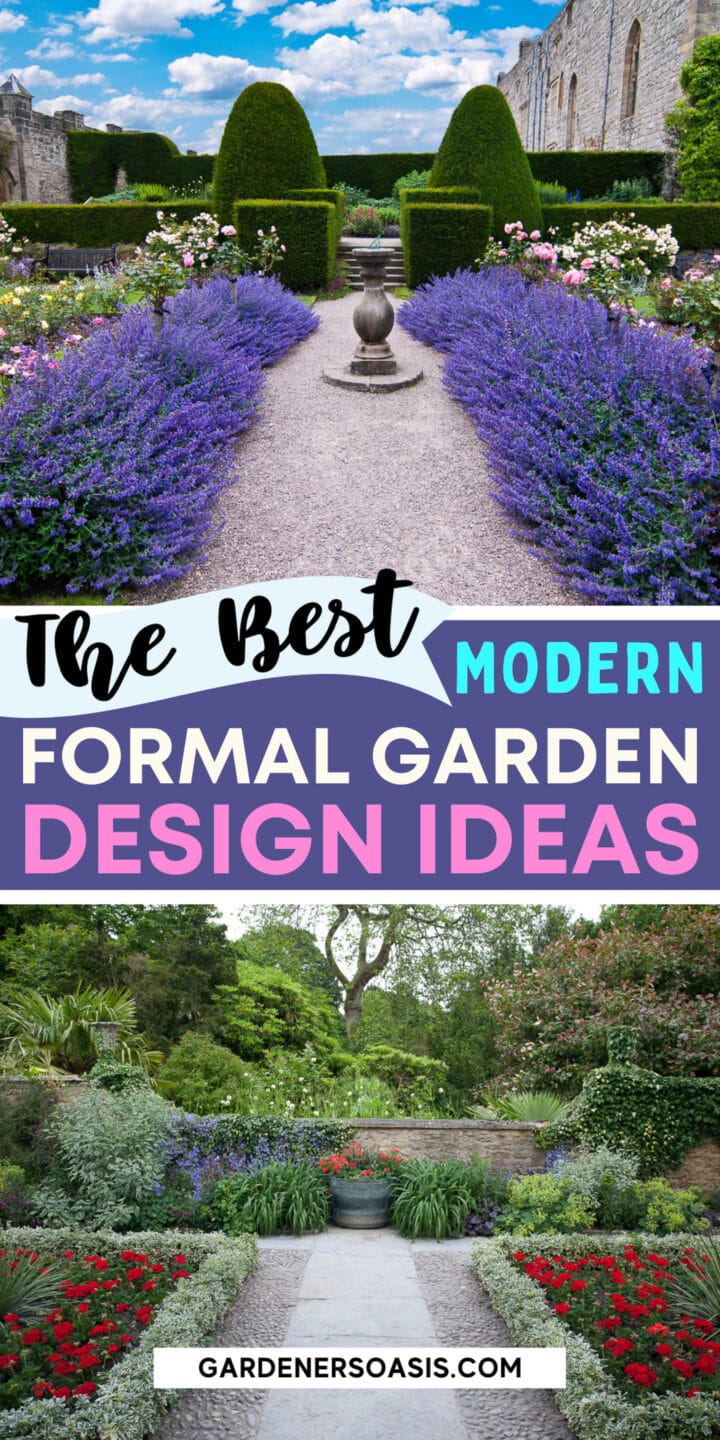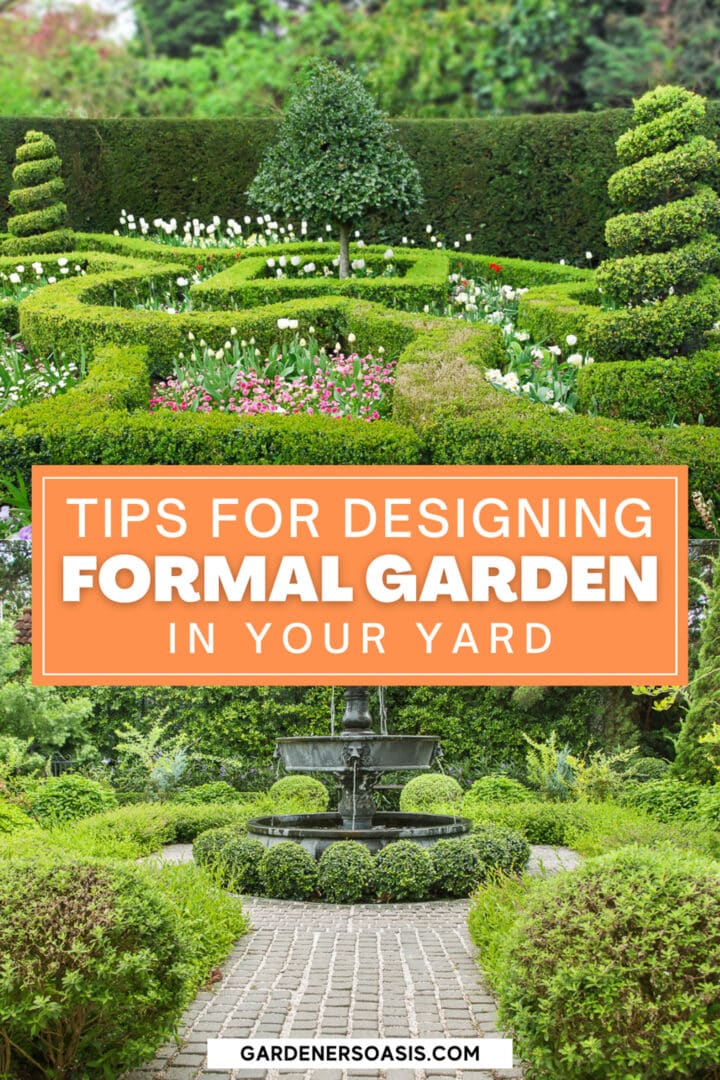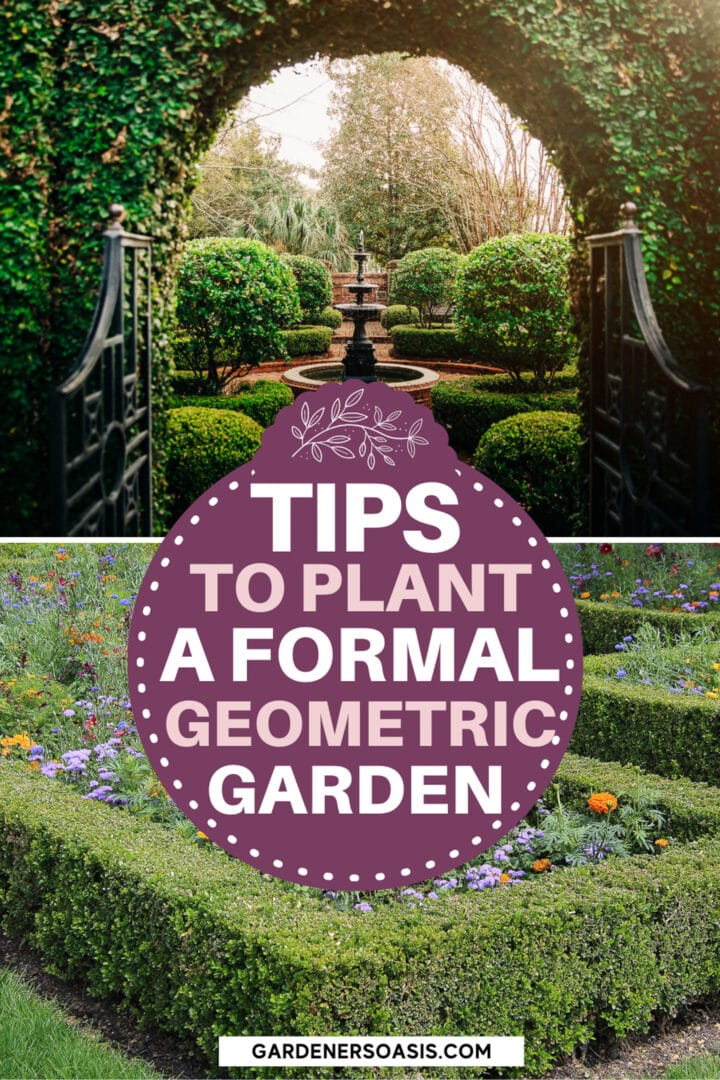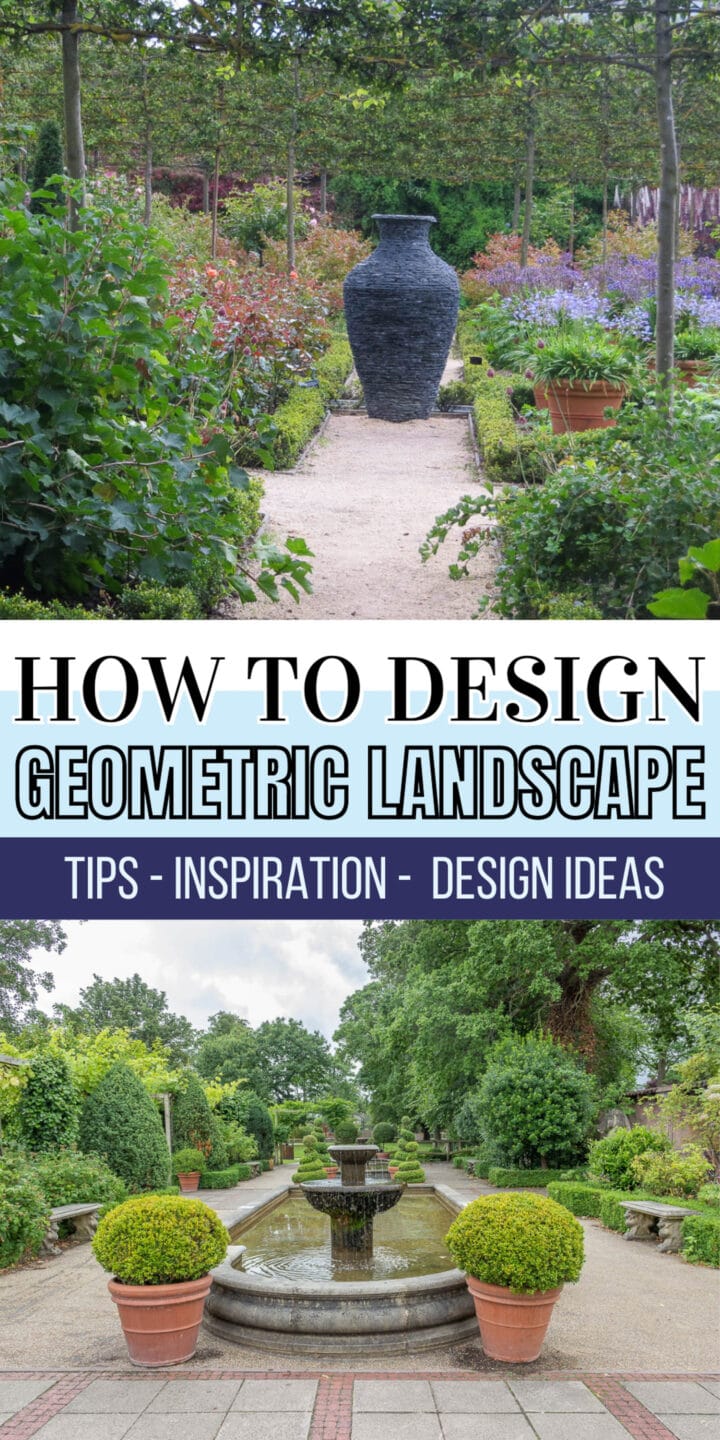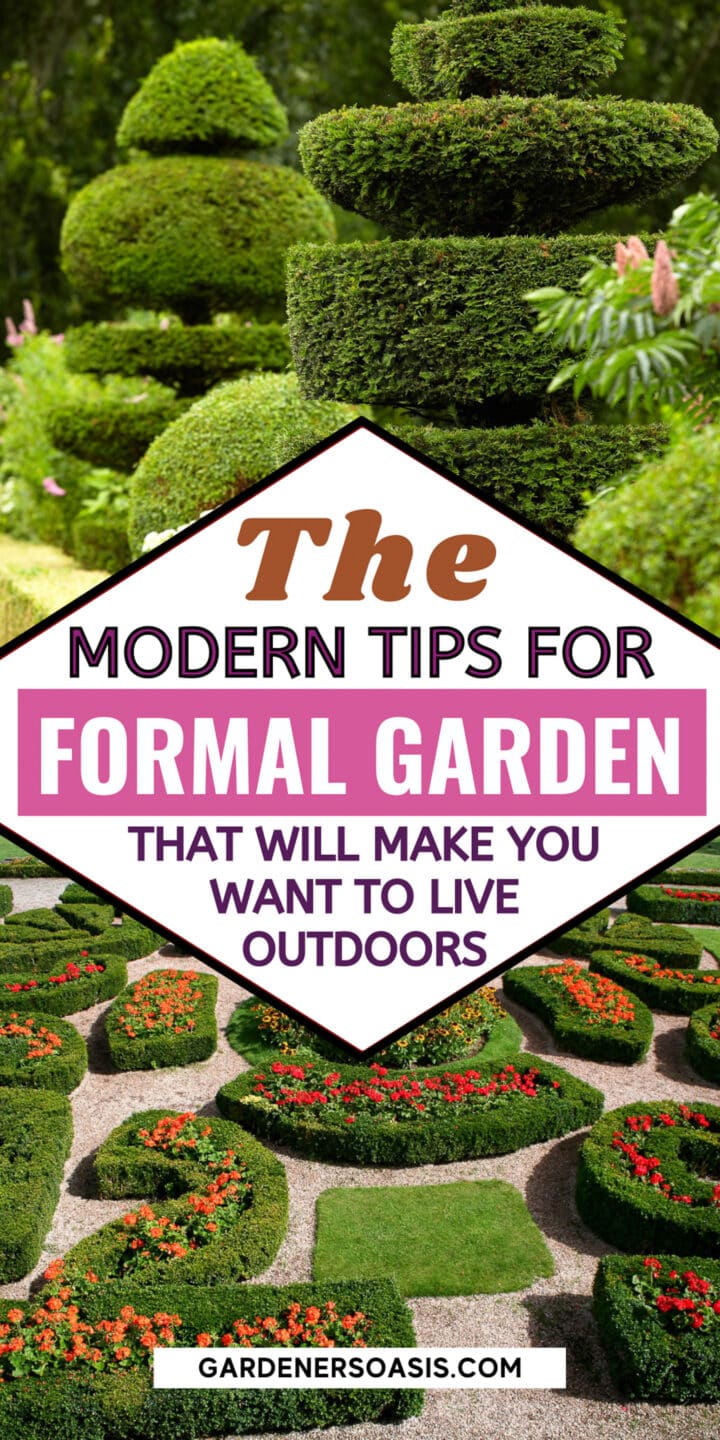Geometric Formal Garden Design Ideas
If you're looking for style and sophistication in your garden, then these geometric formal garden design ideas are for you. Find out how to add elegance, structure, and interest to any outdoor space.
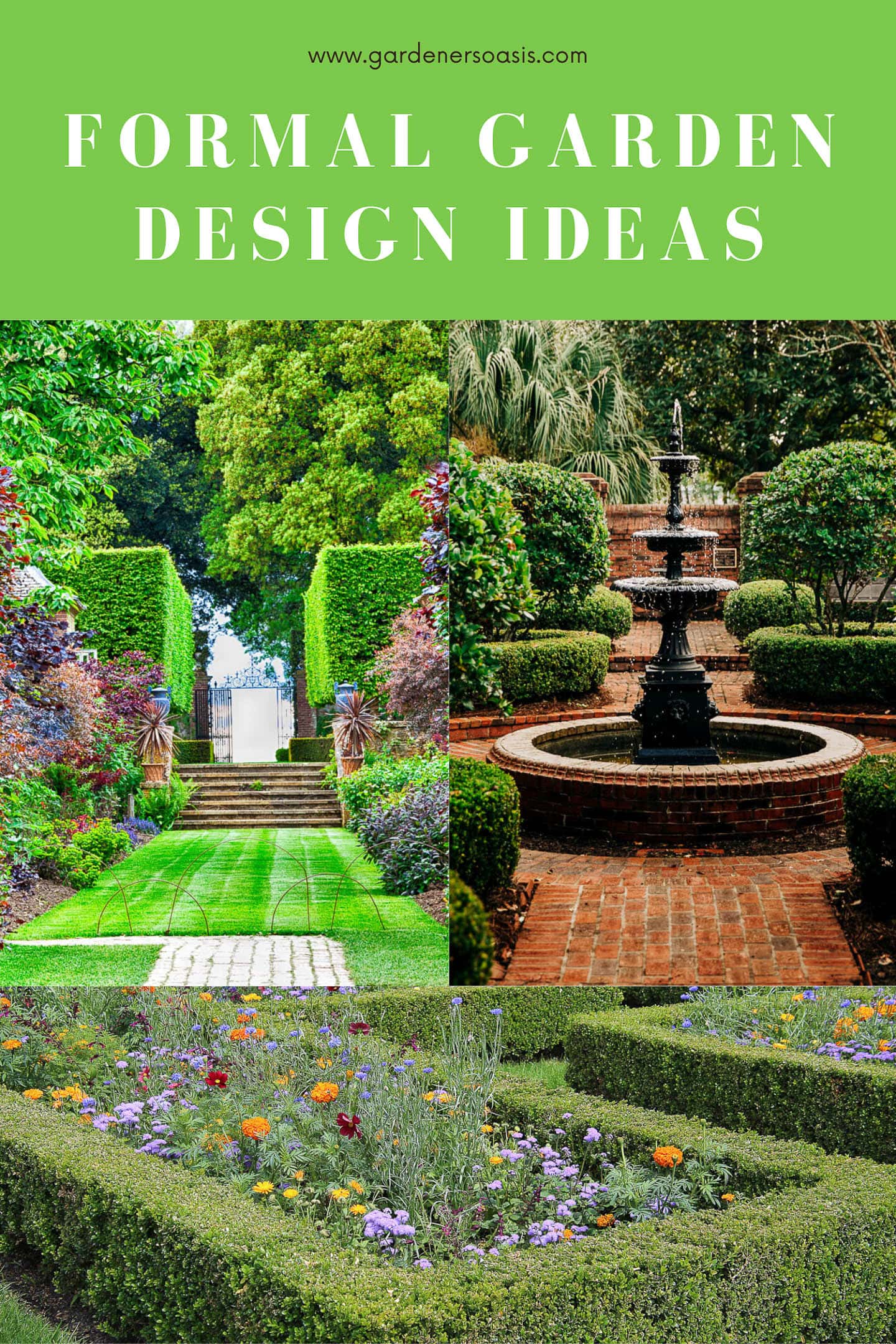
I don't know about you, but I have always been fascinated by the geometric formal garden designs that you often see in the large gardens in Europe.
The structured paths, geometrical patterns, symmetrical layout, and clipped plants combine to accentuate the formal structure of their houses.
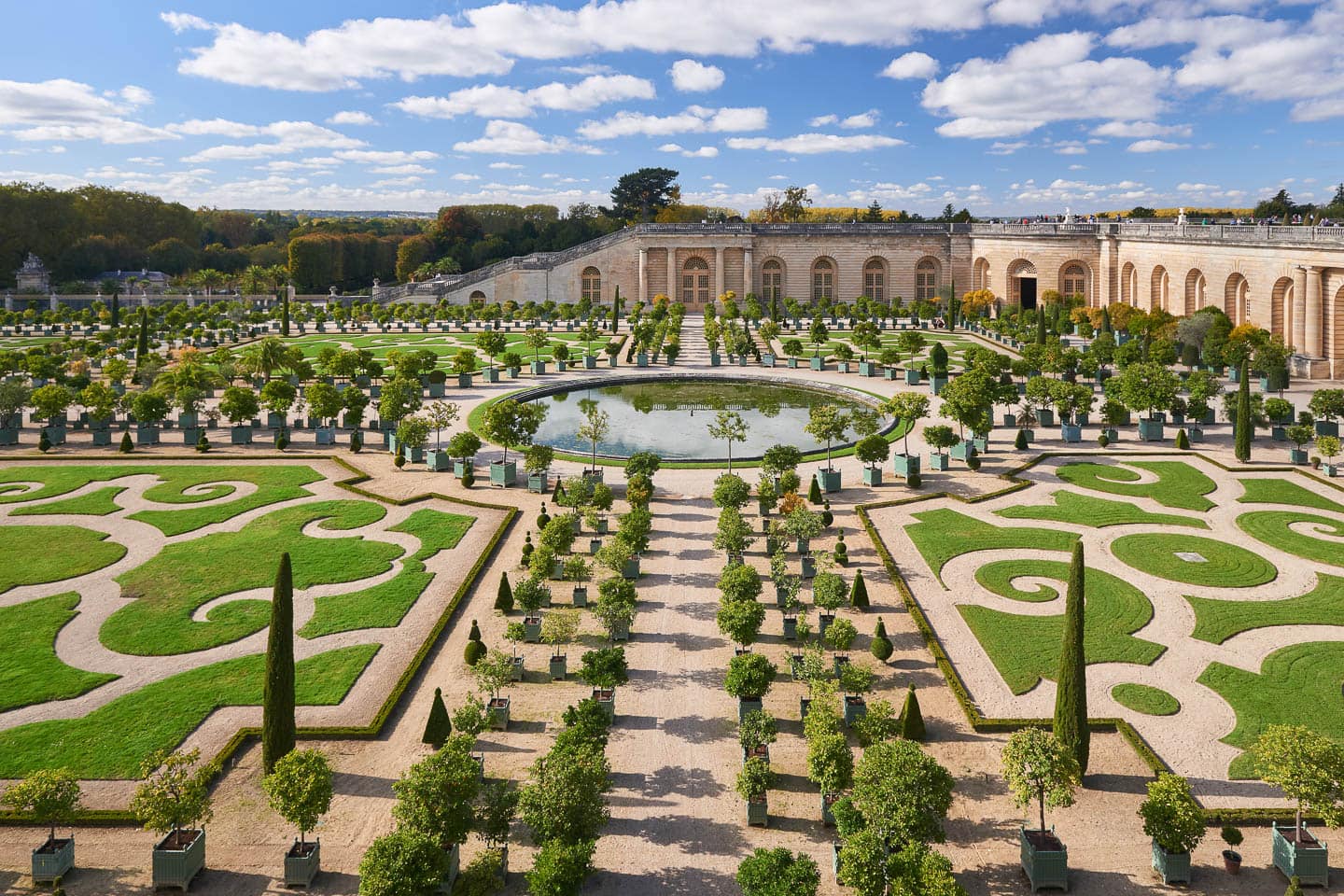
Like this one in Versailles, France.
While their grounds are much larger than most of ours, the same basic principles can be applied to any size of garden. And actually work quite well in smaller urban yards.
Which is probably why I like so many of the gardens in Charleston, SC. They are a great example of smaller versions using the same design principles.
So here are my tips on creating a geometric formal garden design in your own yard.
1 | Create a central axis
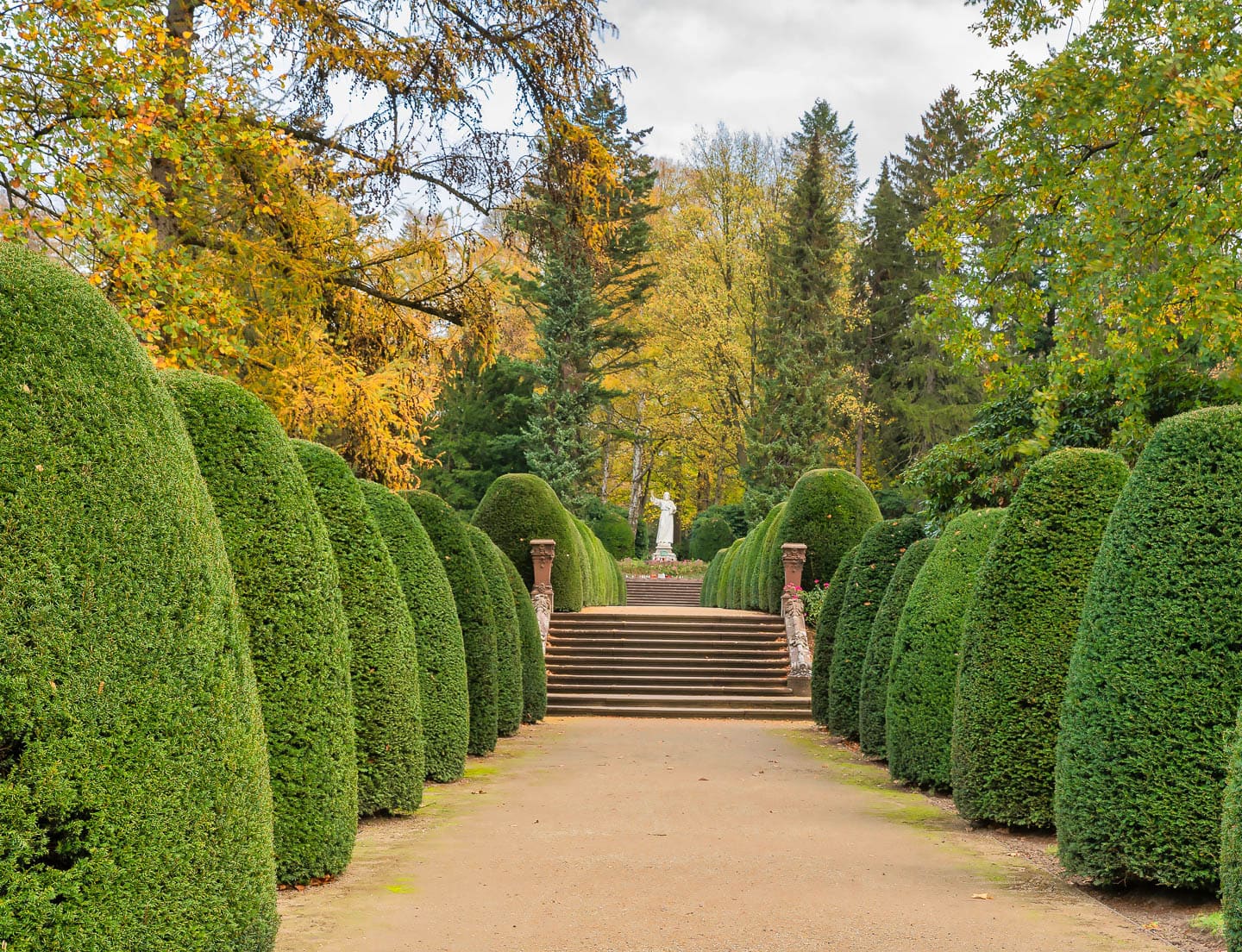
The first step to creating a formal garden to create a straight path that runs right through the middle, from front to back.
This is the center of the garden that the rest of the design is created around.
This path is normally made of pavers or gravel.
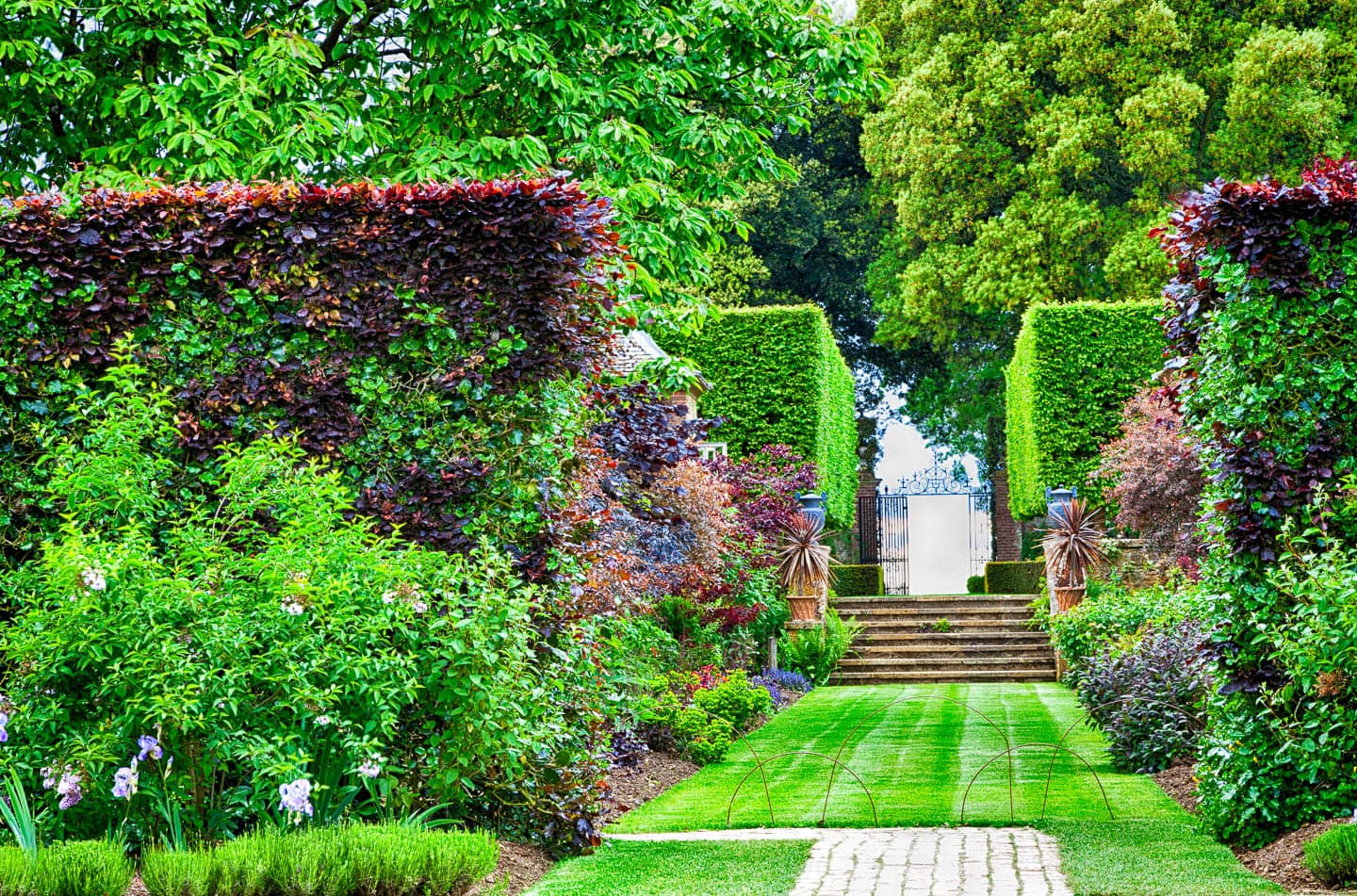
But can also be made of natural materials such as grass or mulch.
It usually leads the eye to a focal point at the back of the garden.
Which could be a beautiful view, statue or water feature.
2 | Use natural stone
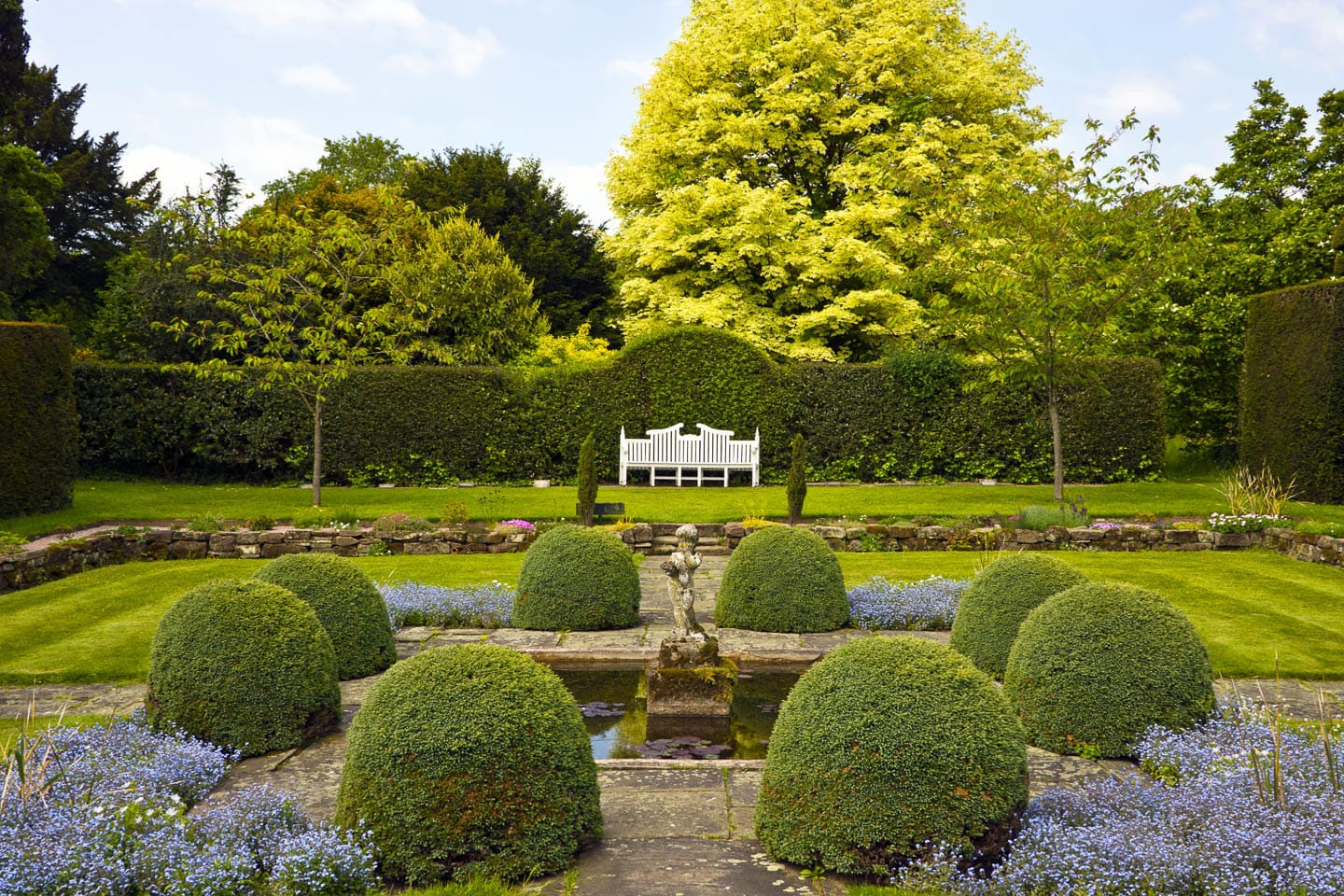
Natural stone is often used for paving pathways and patios, or to edge lawns and gardens.
It creates outlines that make the geometric shapes of the garden clear.
For a less expensive option, you can also use gravel.
3 | Create balance with symmetry
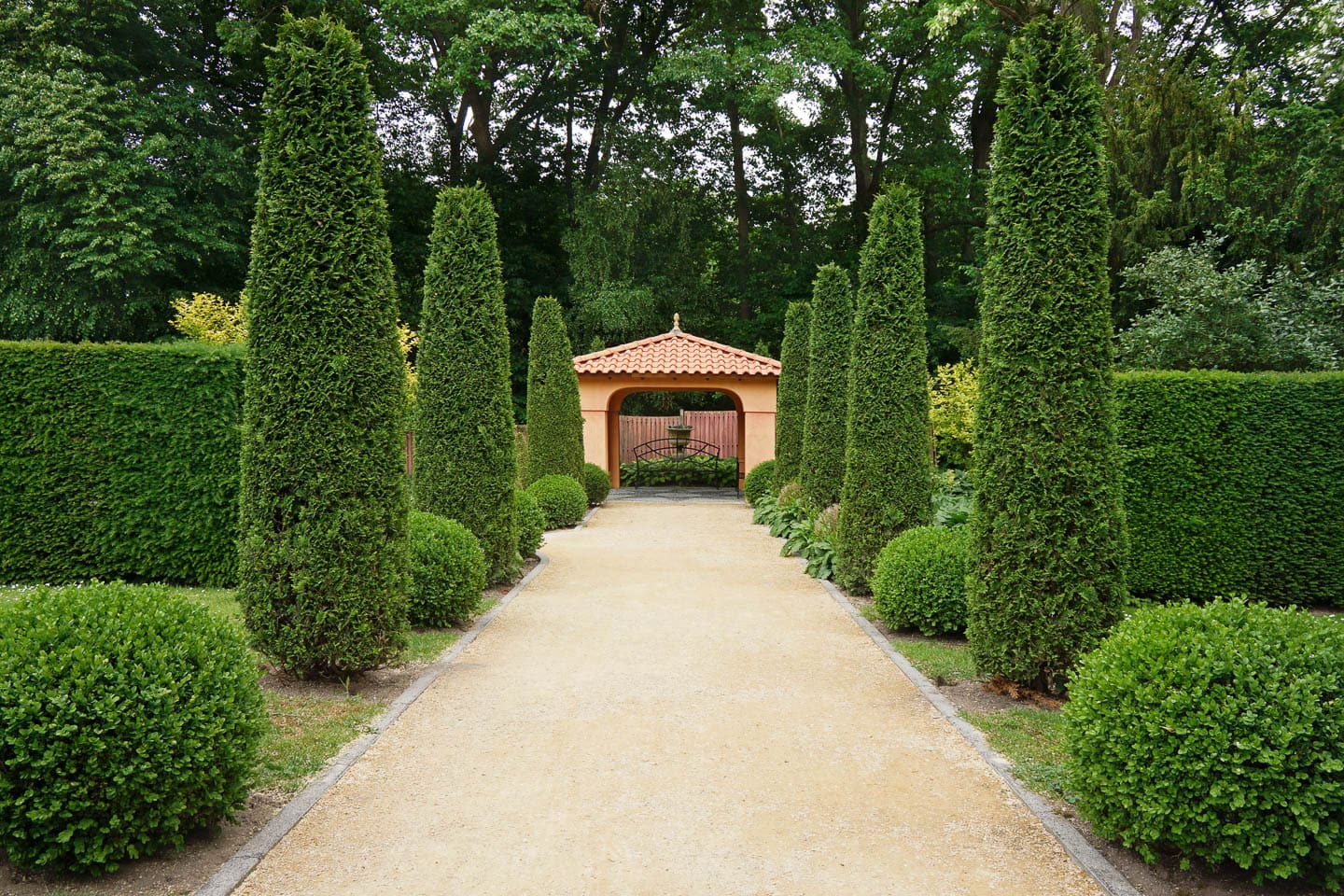
The next step is to use symmetry to design the garden on either side of your center walkway.
In the traditional formal garden, one side is an exact mirror image of the other.
Which makes your job easier, since you only half to design half the garden and then repeat it.
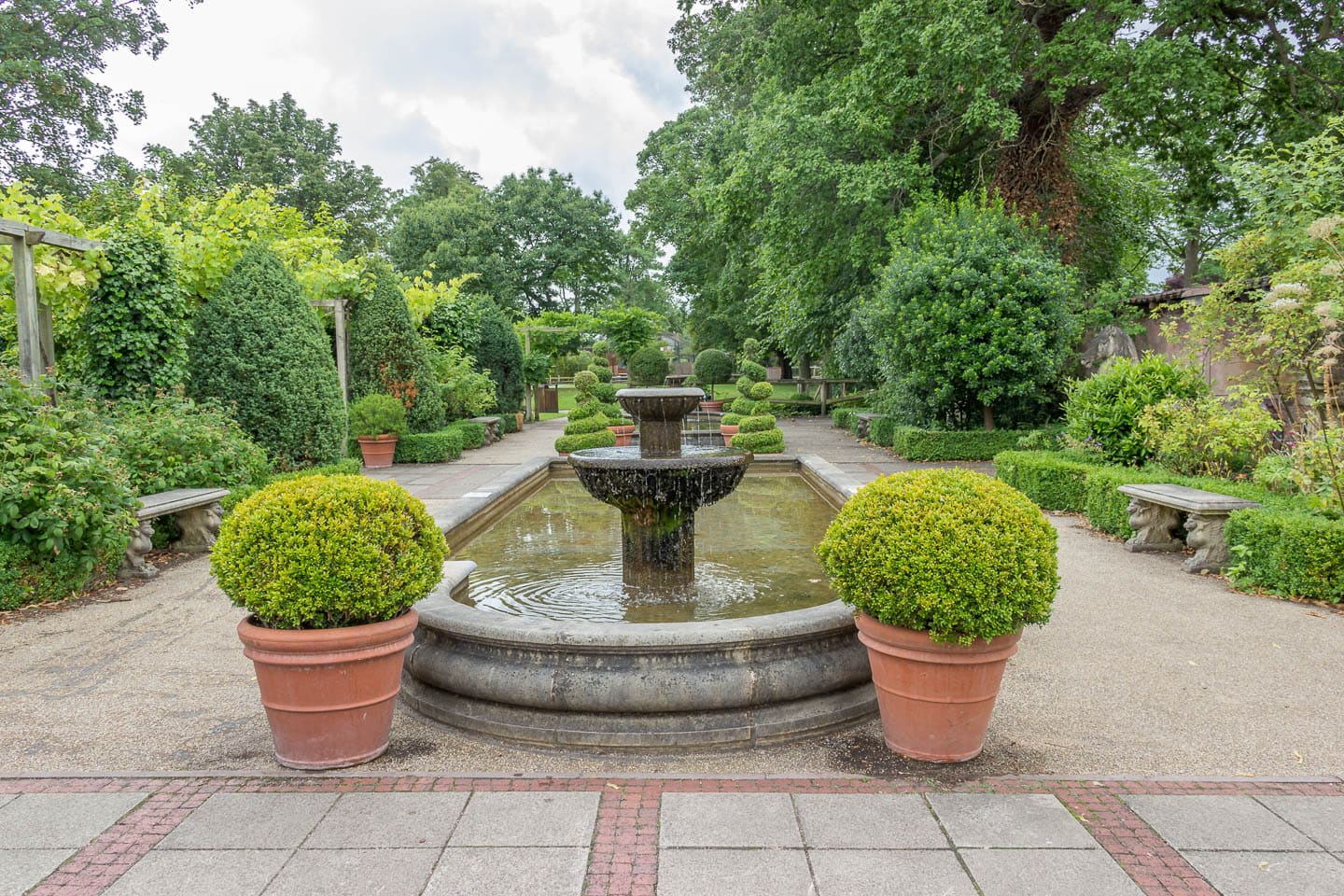
However, you can also achieve symmetry using similar elements that aren't exact duplicates.
As long as the design on opposite sides has plants that are a similar size and color, it will still give you the balanced look.
4 | Repeat elements
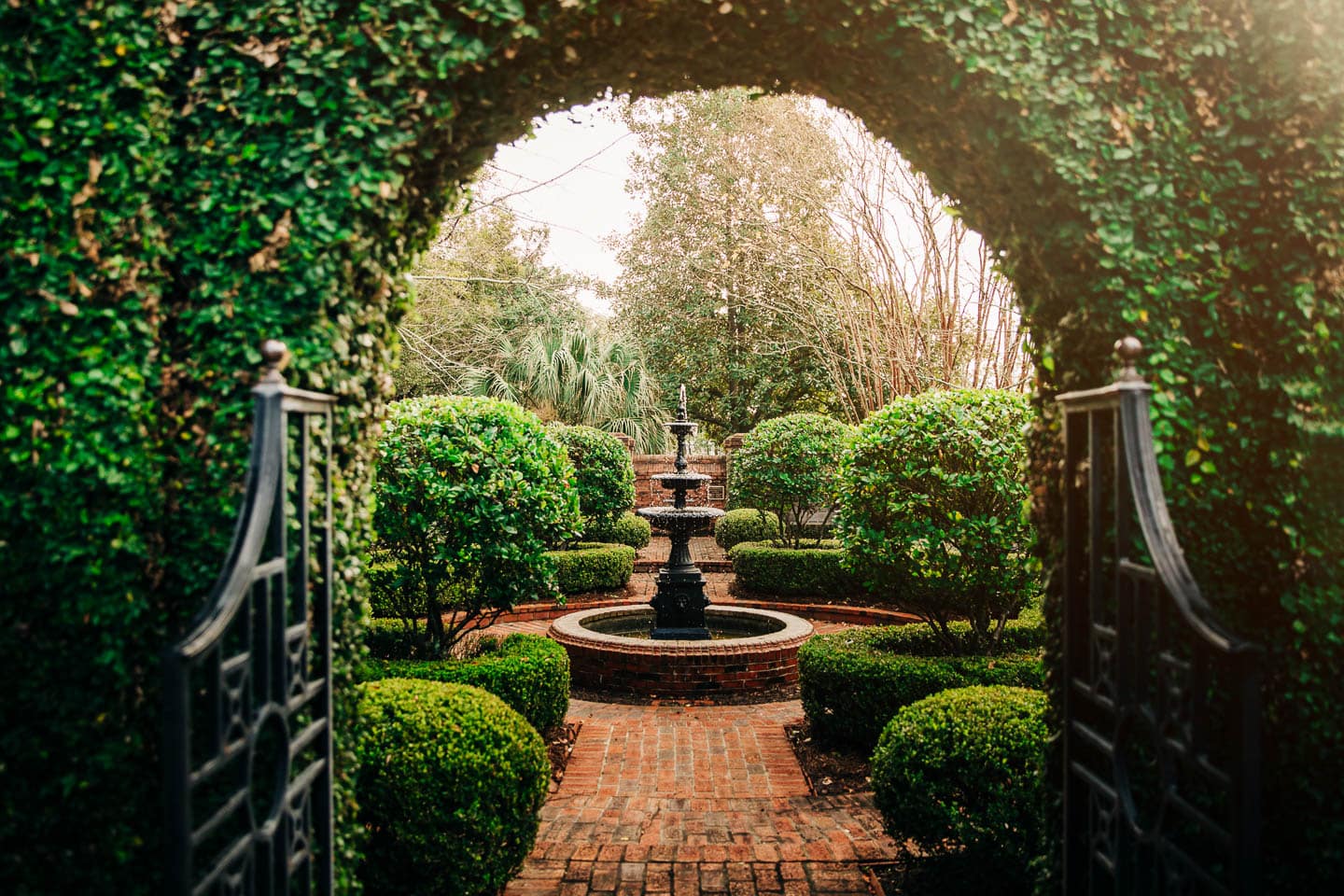
Repetition is another key element of formal garden design.
It helps to enhance the symmetry and balance of the garden.
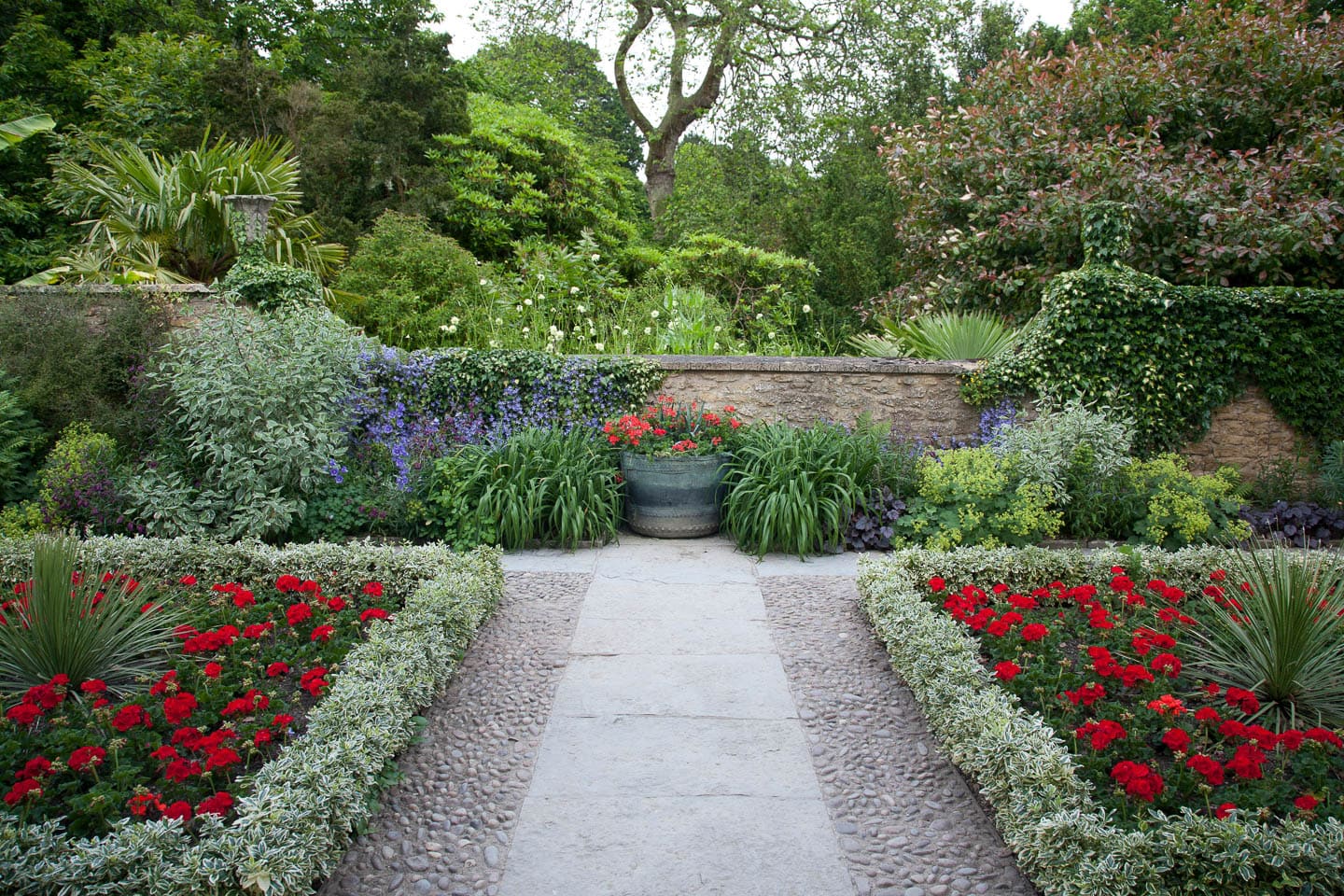
This applies to pretty much everything in the landscape – plants, color and architectural elements
5 | Add an interruption
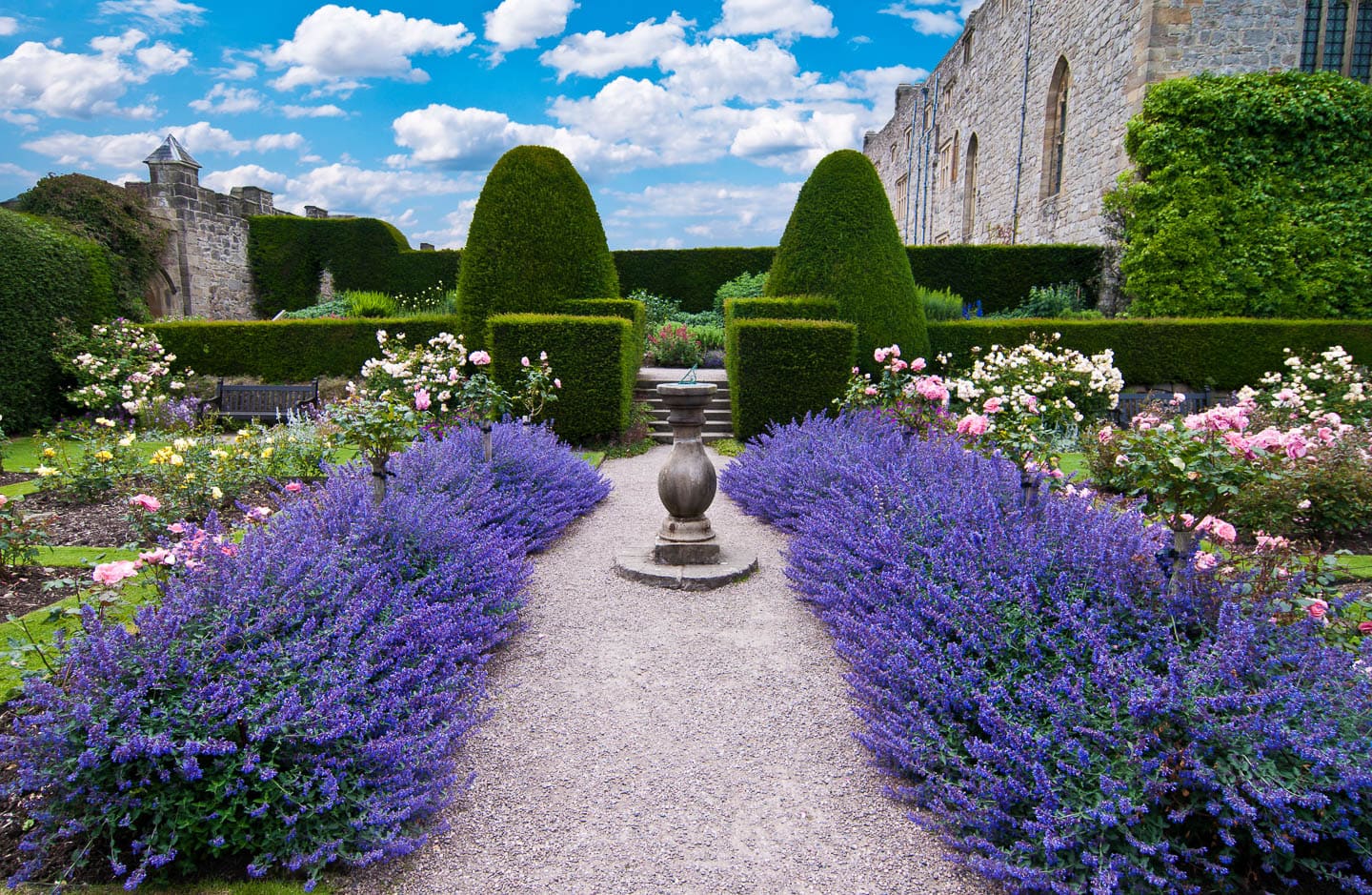
To break up all that symmetry and repetition, add an interruption in the middle of the center path.
This can be a simple architectural element such as a birdbath, sundial, statue or urn.
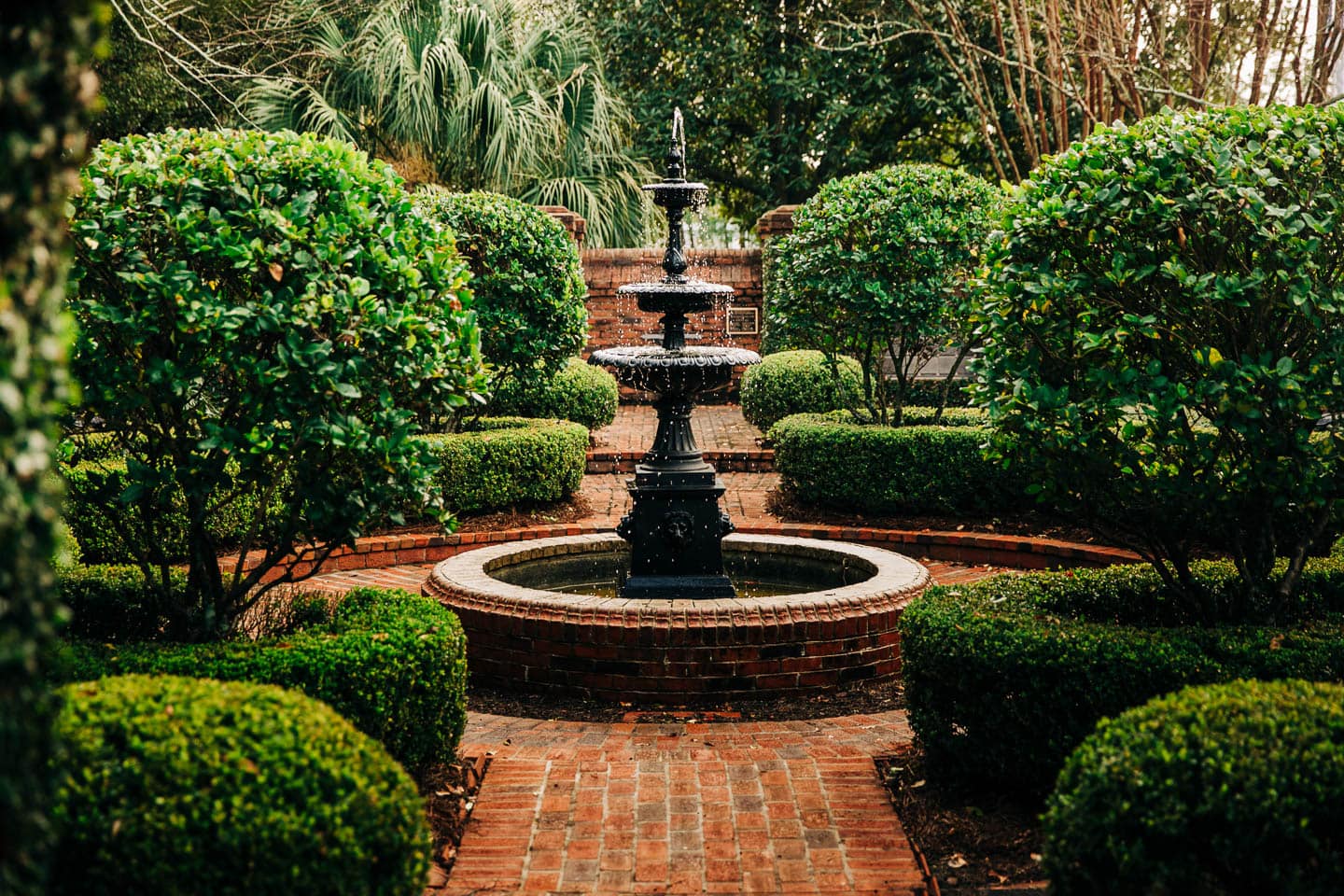
Or a larger break such as a large water fountain or even a geometrically-shaped garden.
Often, there may be another path that crosses the center walkway at this point, creating multiple separate garden spaces.
6 | Create a geometrical pattern
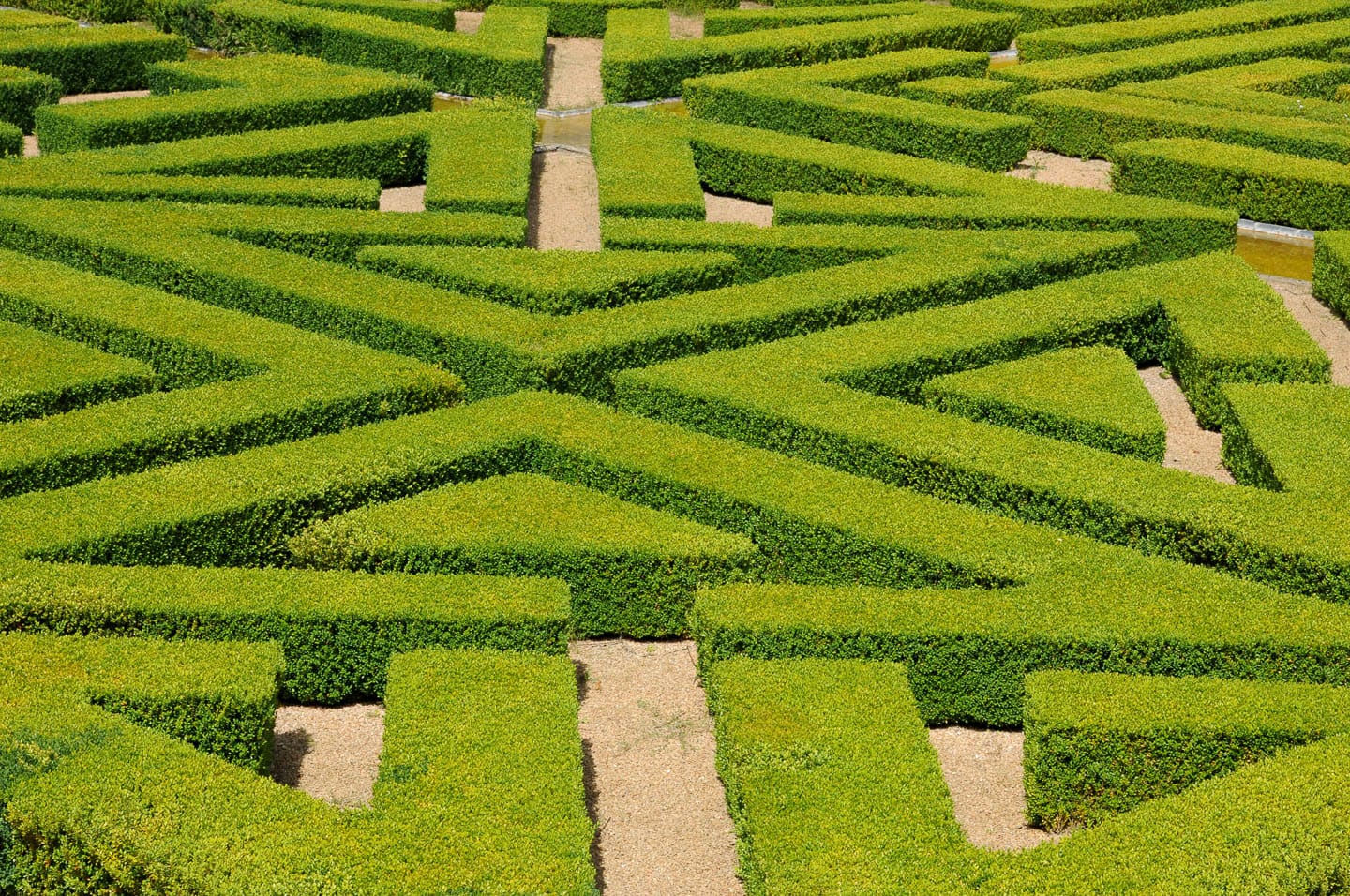
Geometrical gardens (or parterres as they are called) are one of the quintessential elements that define formal designs.
The large formal gardens in Europe usually have fairly-complicated, straight-line patterns using squares, rectangles or triangles.
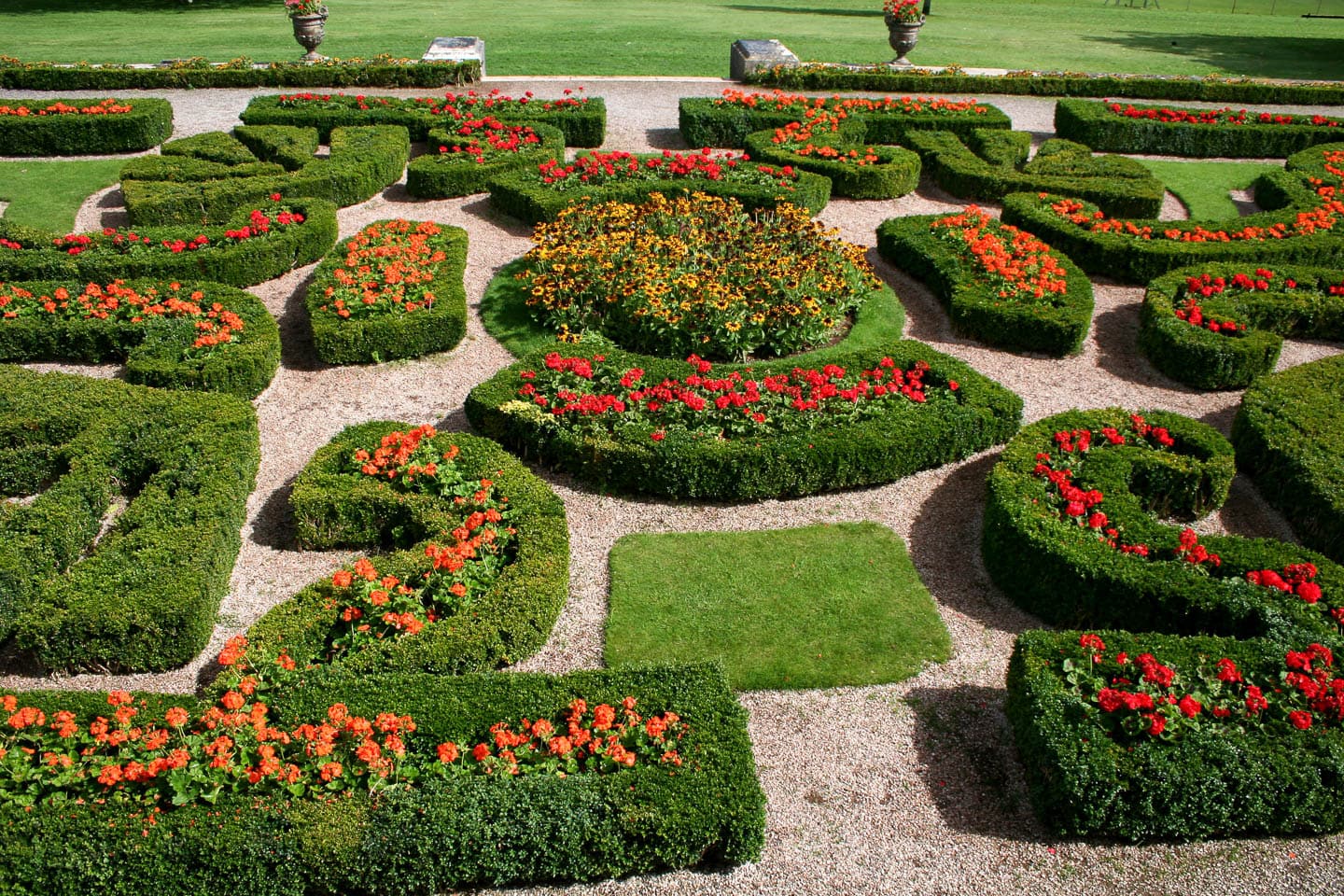
But curved garden beds can also work.
For most of us at home, we don't have the space or the time to create such complicated designs.
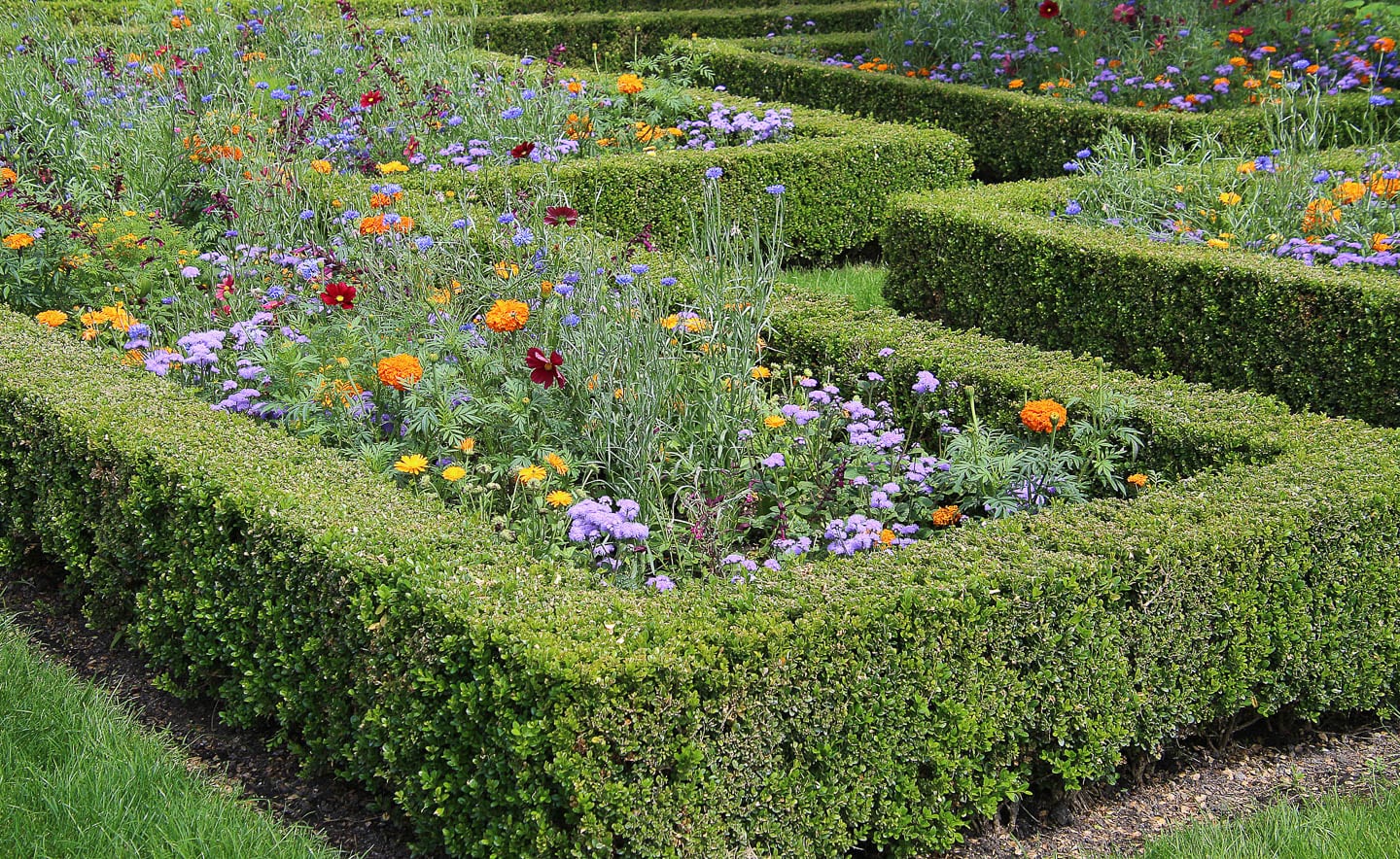
So simple squares are a good alternative that are easier to plant and maintain.
7 | Outline with dwarf clipped hedges
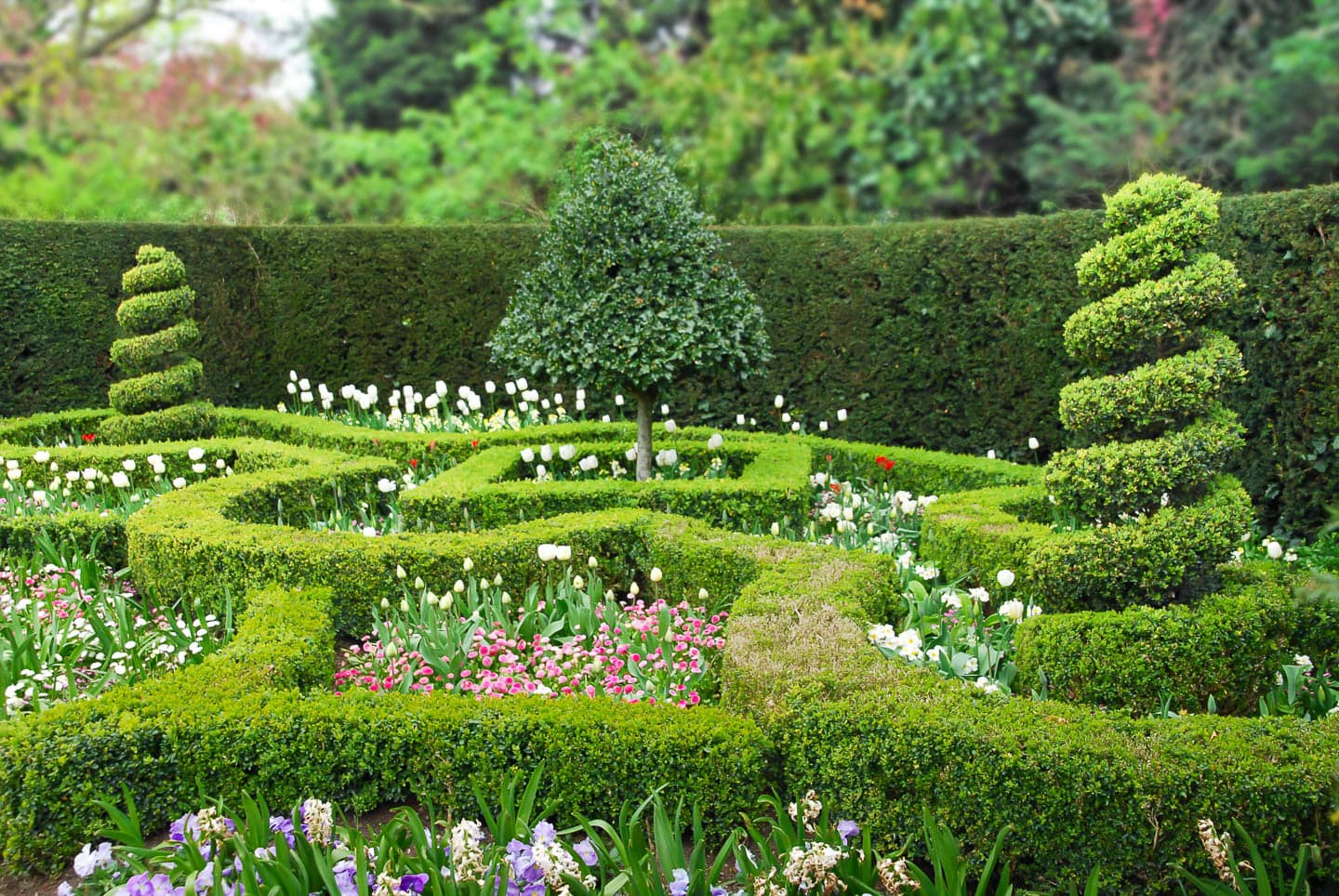
To keep the geometry as the main focus, the plant selections in formal gardens are usually kept quite simple.
Which is why dwarf boxwood or yew hedges are often use to line walkways and form the geometrical outlines.
To add some contrast, flowers and plants with different leaf and flower textures can be planted in between the clipped hedges.
8 | Create topiary
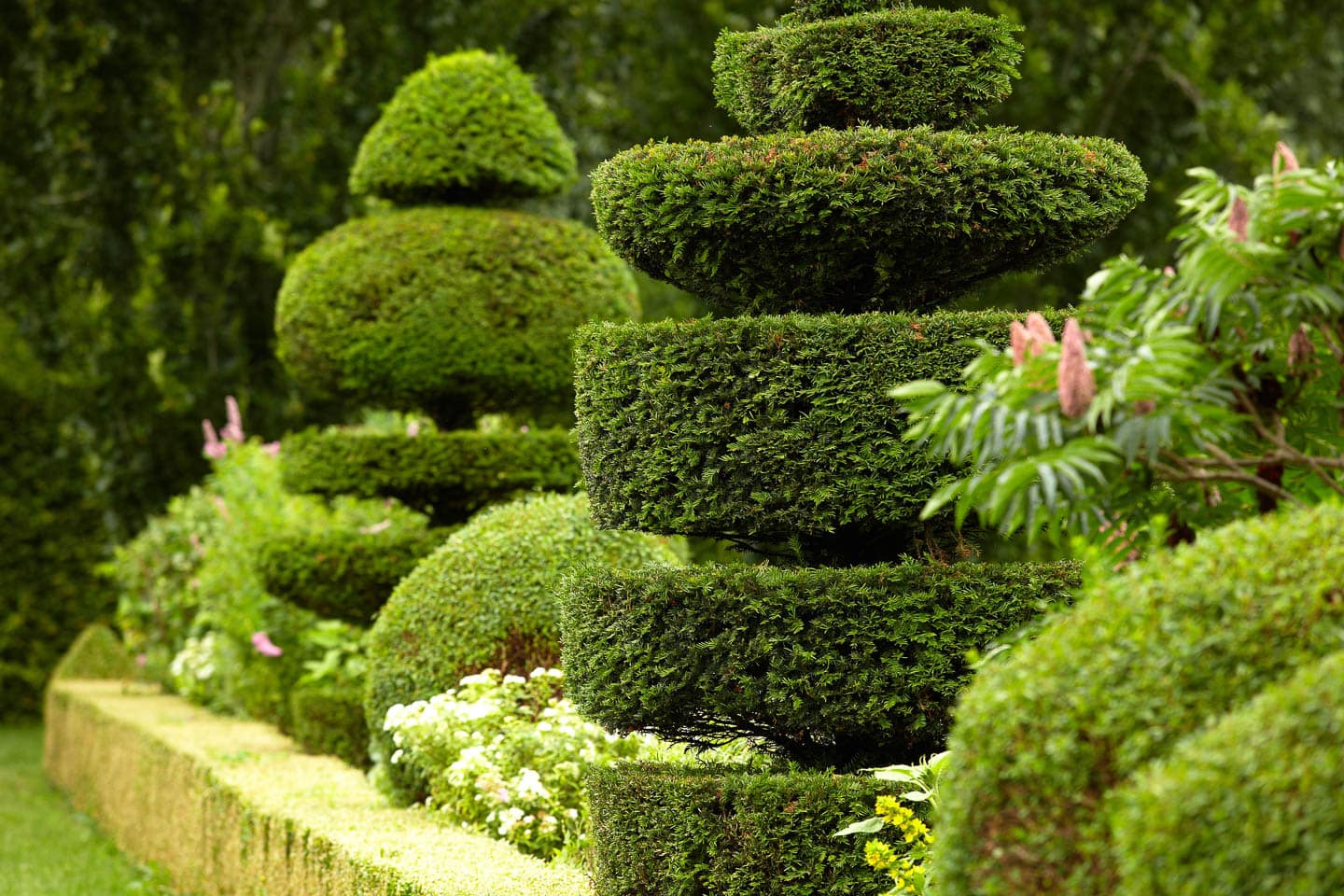
In addition to the clipped hedges, many formal garden designs also have topiaries.
These are bushes that are trimmed into shapes to add interest to the garden.
The shapes could be simple geometric ones like spheres.
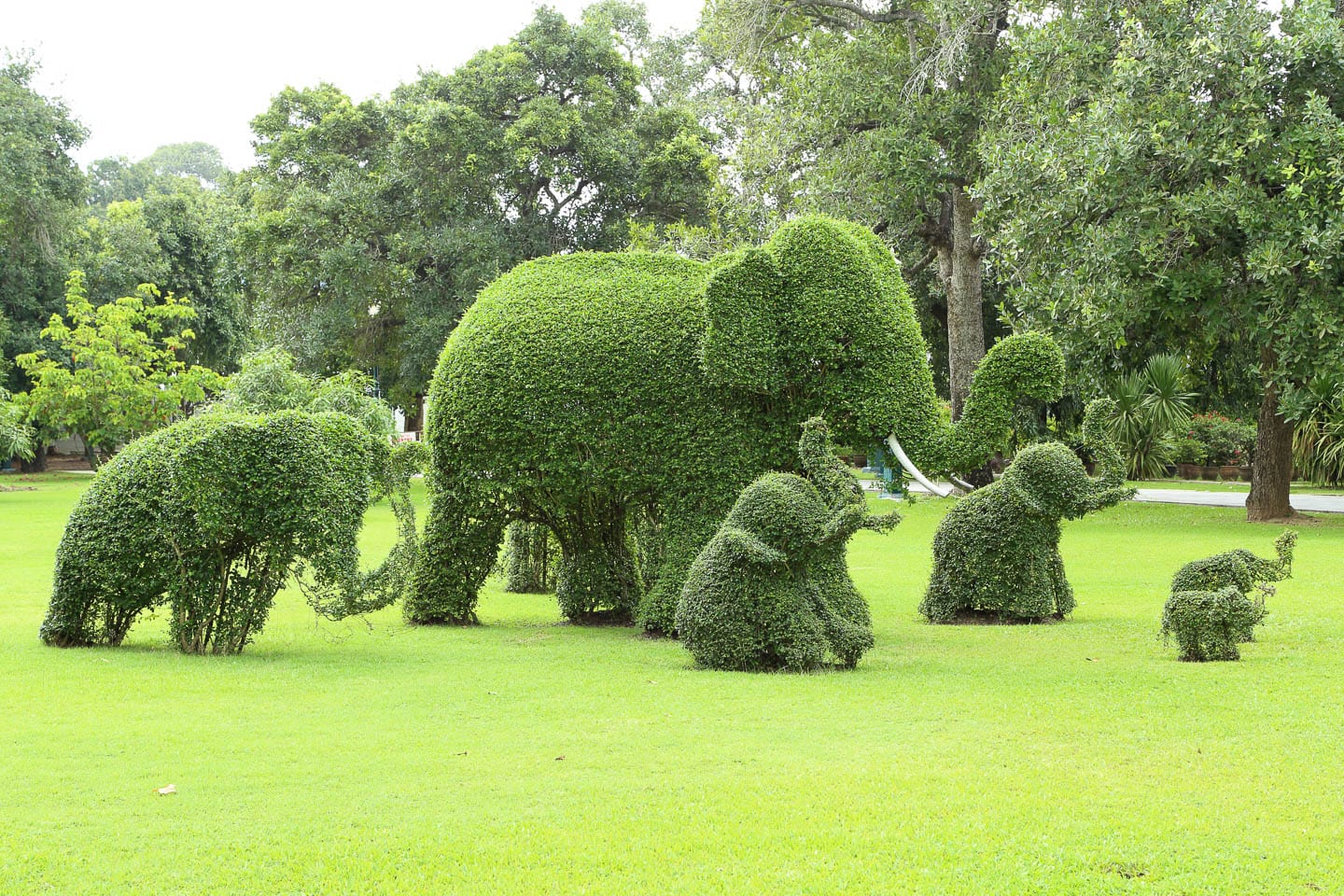
Or (if you're more talented than I am), you can create more complicated ones, such as this topiary elephant family.
9 | Limb up trees
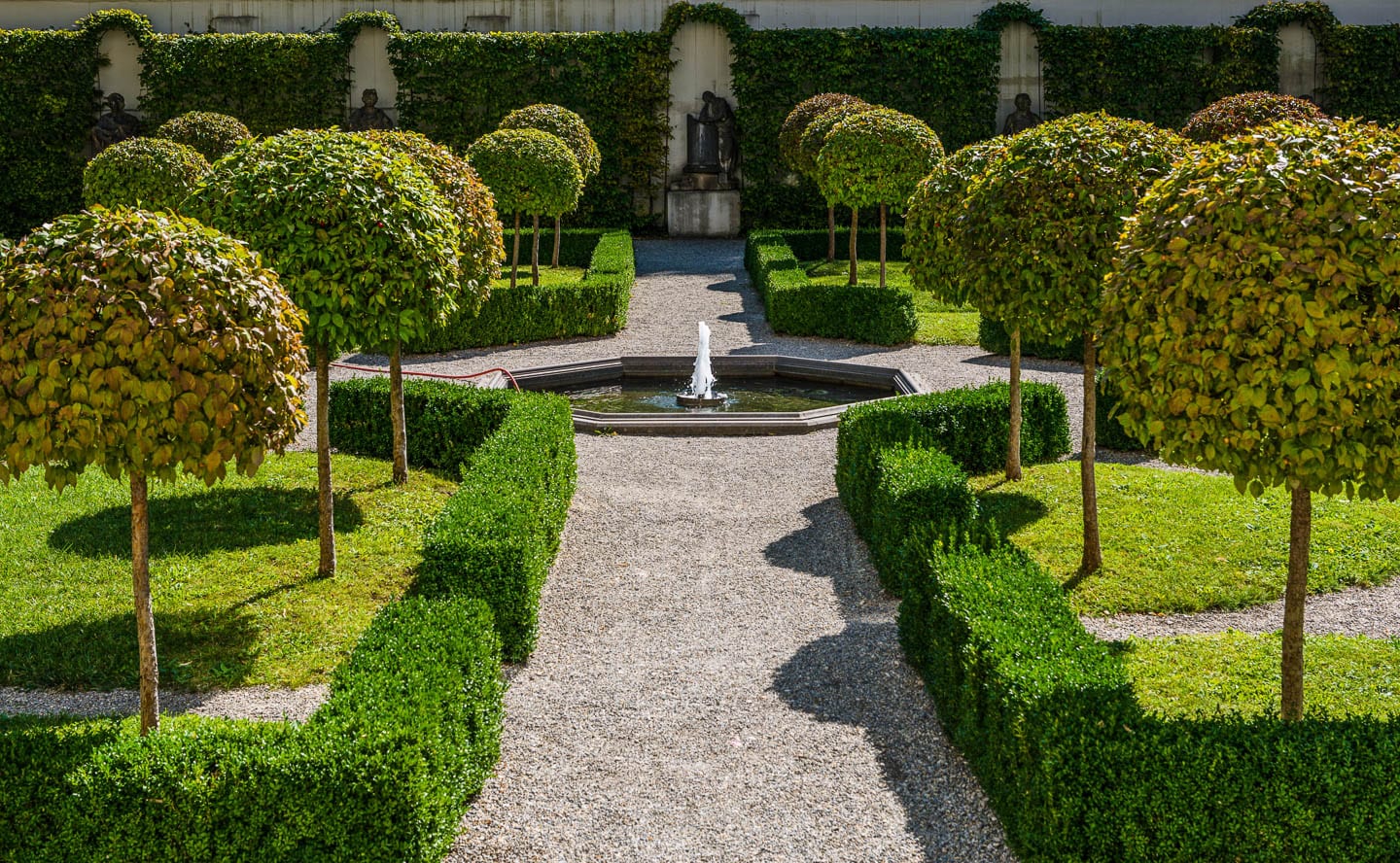
Trees in a formal garden are usually limbed up and trimmed into a ball or curved shape.
This makes sure that the geometrical shape of the garden is maintained and can be seen clearly.
10 | Use water features
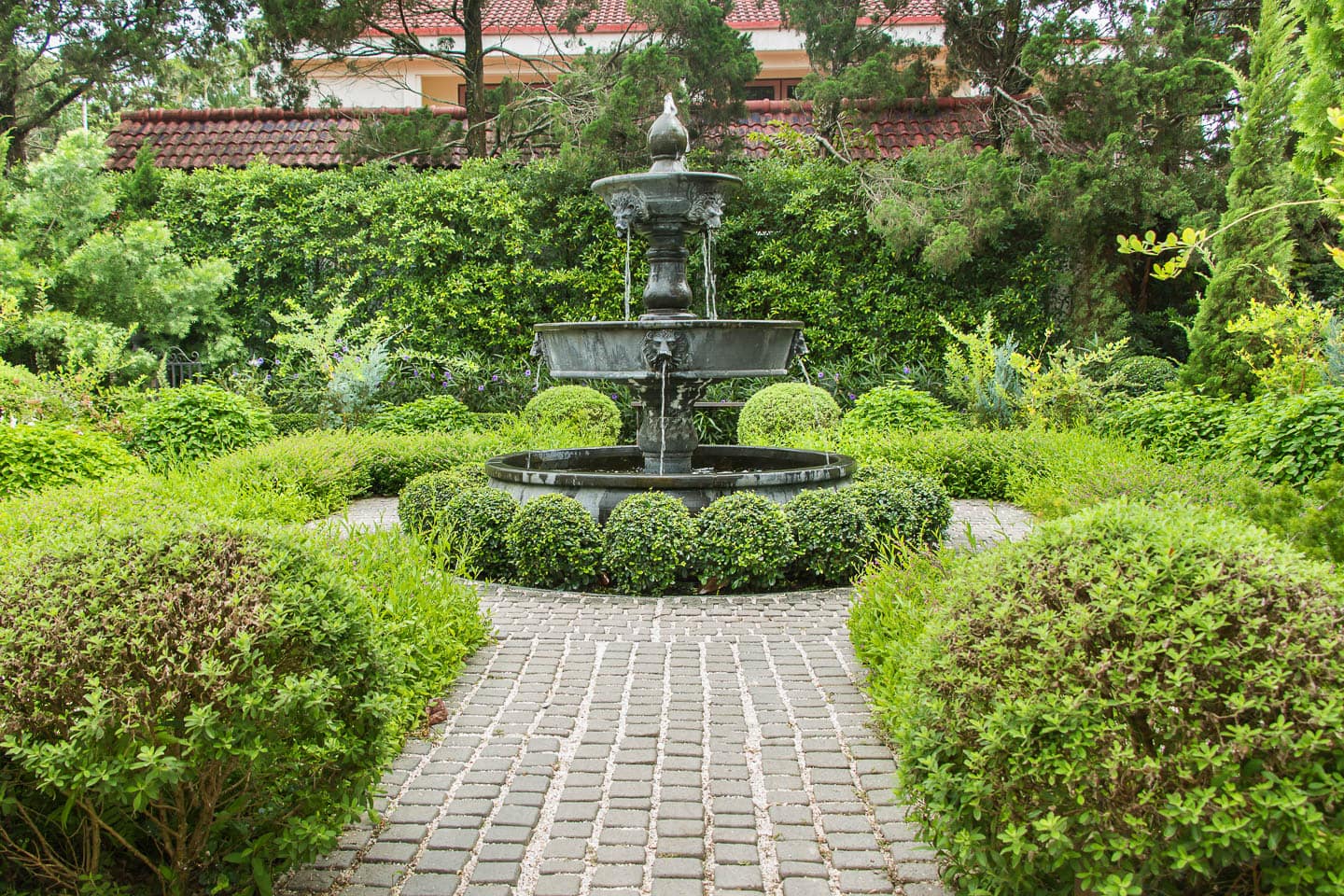
As in most gardens, water features add movement and soothing sounds to the landscape.
In the formal garden, these are often used as the interruption in the central path.
But can also be the focal point at the end of the garden.
11 | Add large urns and statues
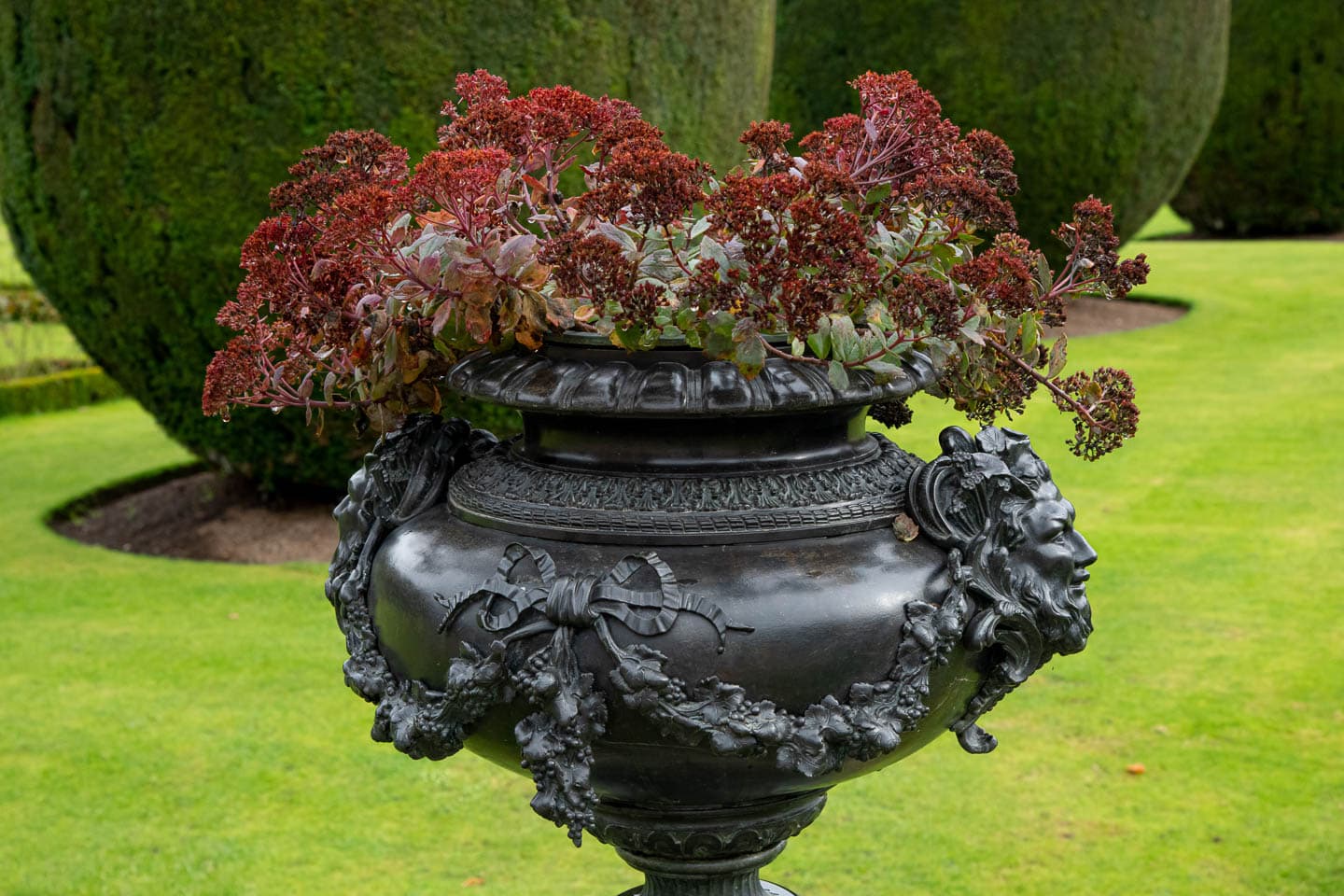
Finally, large urns or statues are often placed on plinths to add structural interest to the garden.
These can be used throughout the garden as accents.
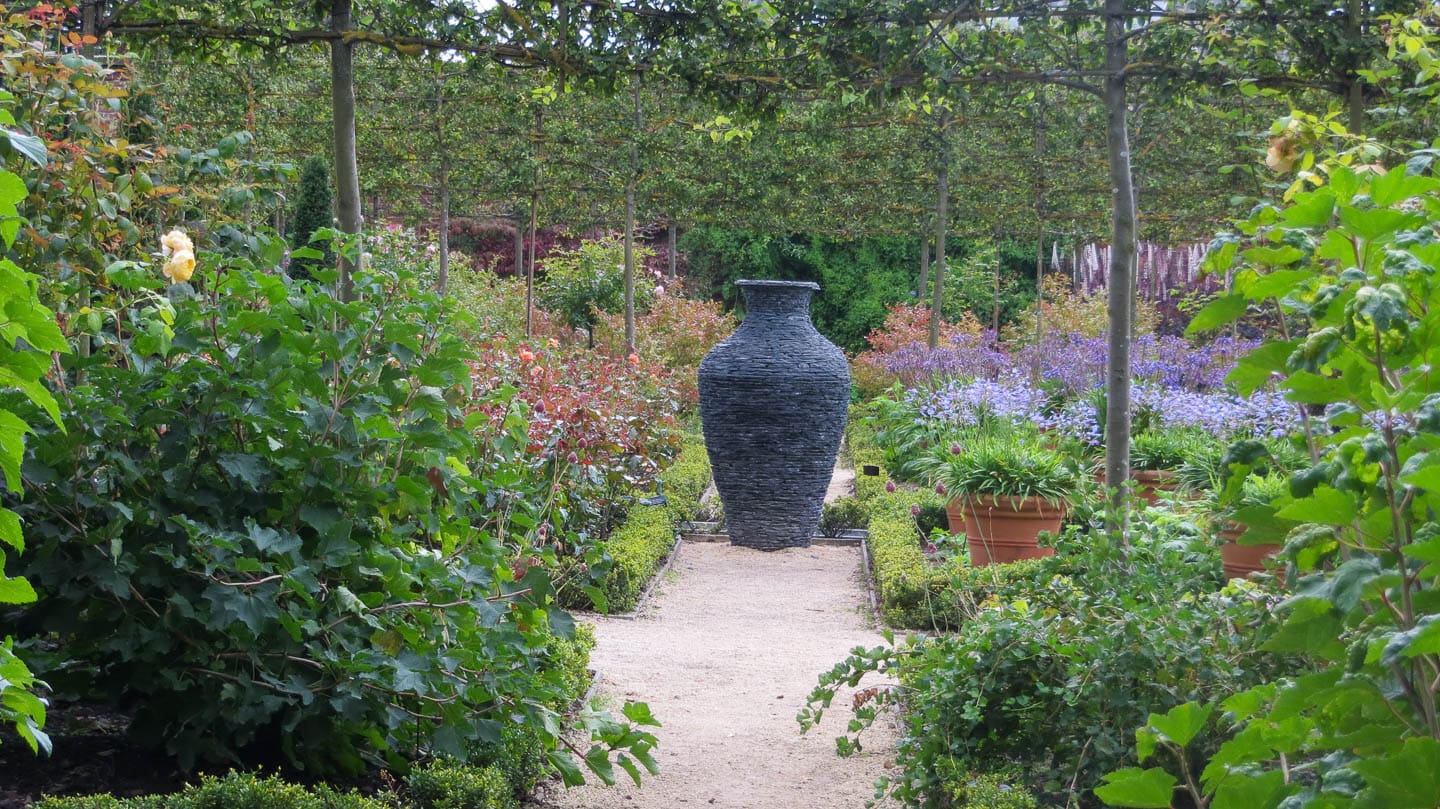
Or (similar to a water fountain), they could be an interruption to the central walkway or a focal point at the end of the path.
And that's the overview of setting up a geometric formal garden design. Hopefully, you've found some ideas to use in your own garden.
Frequently asked questions
What is a formal garden?
A formal garden uses a symmetrical design around a central path with geometric patterns, neatly clipped shrubs, and clear structure. It originated in the grand estates of Europe where the garden mimicked the formal house design.
Other garden design ideas you might like
- How to design a zen Japanese garden
- Modern cottage garden design ideas
- Secret garden design ideas
- Year round flower garden tour
Or read all of our landscape design ideas.
Have comments or questions about our geometric formal garden design ideas? Tell us in the section below.
This post was originally published on February 2, 2023 but was updated with new content on November 23, 2024.

